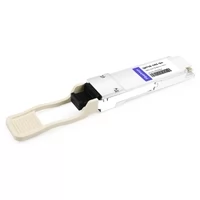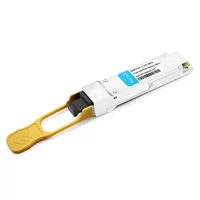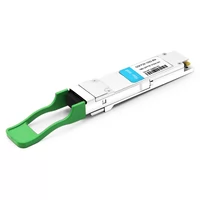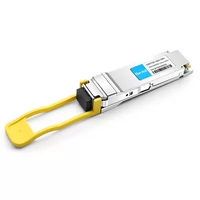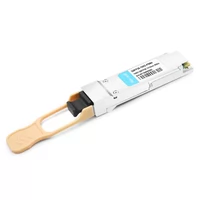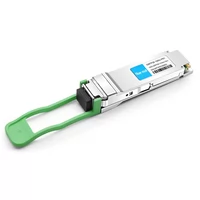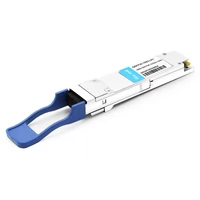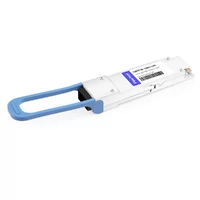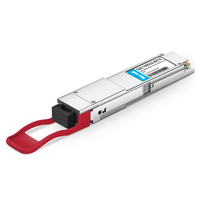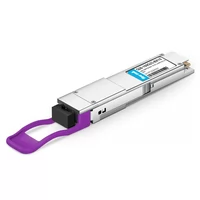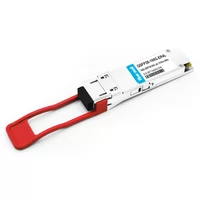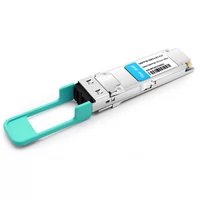Step right up to our wizardly blog on fast web working out, where we solve the riddles of technology and managed switches. In this paper, we will discuss what a high-performance managed switch with 4x 100G QSFP28 and 6x 100GbE ports is capable of doing. Our goal is to equip IT professionals with all they need to know about advanced functions, operational advantages as well as real-life usage examples for these cutting-edge devices used in networking. If you plan on improving efficiency at data centers or upgrading enterprise network infrastructures, then consider this post an invaluable resource that will enable you to make informed decisions.
Table of Contents
ToggleWhat’s a QSFP28?
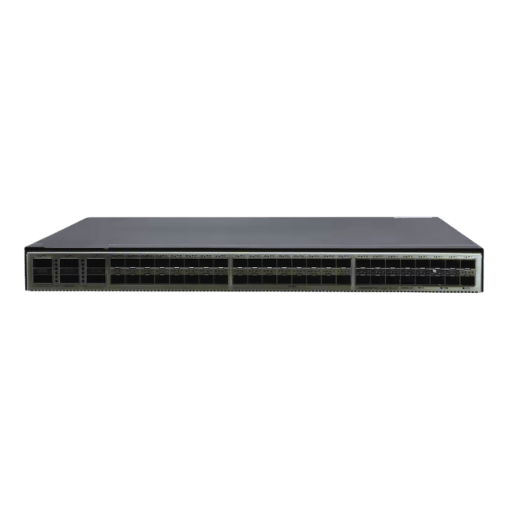
Knowing about 100G QSFP28 Technology
100G QSFP28 technology is a pluggable module form factor for high-speed data transfer. The acronym stands for Quad Small Form-factor Pluggable 28, which means that it can also support 2x 100G QSFP28 (100G) data rates. This technology ensures wider bandwidths and faster data transmission through networks. It does this by having four independent lanes on the QSFP28 module, capable of transmitting 25G of data each or combining them for a total of 100G per second. This makes it ideal for use in high-performance network switches and contributes to more scalable infrastructure solutions in data centers and enterprise networks especially those with 48-port Ethernet L3 configurations.
What distinguishes QSFP28 from other Ethernet Standards
The ability to carry more lanes at higher speeds sets apart 100G QSFP28 from other Ethernet standards. An SFP+ standard carries only one lane at 10 Gbps while a single lane within a QSFP+ standard can carry up to four times that amount (40 Gbps). However, what makes the difference between these two devices even greater is that they both fit into one port on an electronic device whereas with qsfp98, there are four ports available, each capable of handling twenty-five gigabits per second – aggregating them all together gives us one hundred gigabits per second at most which still falls short when compared against qsfp39 modules such as CXP transceivers where you have twelve lanes carrying ten gigabits per second thus providing maximum capacity.
Applications for Modern Environment Switches
Modern environments require speeds that cannot be achieved without using switch designs like those built around the QSFPS format and technology — this statement should not be too long:). In today’s world, speed is everything, so we need devices capable of transferring very large amounts of data quickly; these devices also need to have a high number of ports, which is why many people choose to use qsfp70 switches. The switches themselves were designed for use within data centers and enterprise networks where there are a large number of users all trying to access the same server simultaneously; qsfp39 modules would not work because they are only capable of transferring ten gigabits per second over twelve lanes whereas in these environments you may be required to transfer one hundred gigabits per second over forty-eight ports
How to Choose the Right QSFP28?
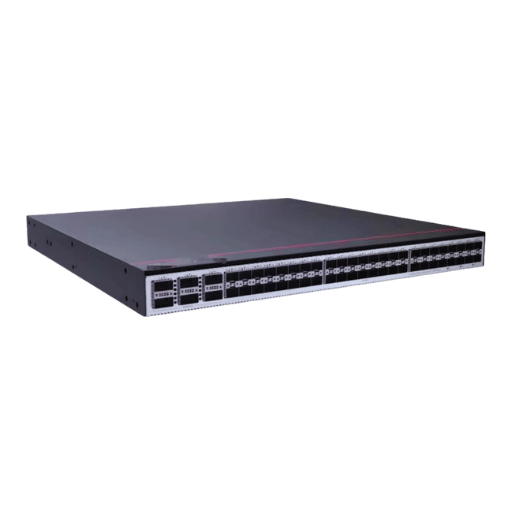
Key Specifications
When choosing a QSFP28 or SFP28 module, ensure that you take into account some of the most important specifications that are necessary for best performance and compatibility with your network infrastructure:
- Data Rate: Check if the modules can support desired data rates usually up to 100Gbps, or even 2x 100G QSFP28 for higher throughput.
- Distance: Indicate how far you want it to transmit because this might be different depending on what type fiber optic cable or copper connection is being used i.e., meters vs. kilometers.
- Connector Type: Make sure they are compatible with existing hardware like LC connectors for fiber optics and RJ45 connectors for copper connections etc.
- Wavelength: Confirm that the wavelength at which these modules operate corresponds with your network needs such as 850nm,1310nm among others so that it is able to work well with a fiber in use plus supporting things like 2x 100G QSFP28.
- Form Factor: Choose whichever module has an appropriate form factor according to those of your network devices but should comply strictly with either QSFP28 or SFP28 standards in order to enhance maximum interoperability between them.
- Power Consumption: Always think about power consumption when selecting any QSFP28 modules thus fitting within power budgets required by various devices making networks more eco-friendly in terms of energy conservation.
Considerations for and Difficulties in Implementation
There are several considerations and potential challenges while implementing QSFP28 modules:
- Compatibility: To avoid connectivity problems, make sure that the QSFP28 modules are compatible with the existing network hardware.
- Cost: As high-performance QSFP28 modules can be costly, it is important to understand the budget implications.
- Heat Dissipation: Ensure sufficient cooling is provided for thermal management so that overheating does not occur.
- Network Design: The design of networks should take into account where these devices will fit into planned infrastructures and their impacts on architectures.
- Firmware Updates: For better performance and security, always keep updating firmware’s.
- Testing: Under expected network conditions, robust tests must be carried out to ensure reliable operation even with 2x 100G QSFP28 links.
The Role of Systems in Managed Switches
Sophisticated systems are used by managed switches for control, monitoring, and configuration of network elements, especially in large 48-port Ethernet L3 setups. These functions include but are not limited to VLAN configuration, Quality of Service (QoS) for traffic prioritization, and strong security features, which comprise Access Control Lists (ACLs). Additionally, advanced diagnostics as well as troubleshooting through SNMP (Simple Network Management Protocol) or RMON (Remote Monitoring) enable quick detection and resolution of potential problems. Consequently, these integrations lead to better performance across the network, increased safety measures, and more flexibility when managing networks.
Key Features of a 100GBE QSFP28
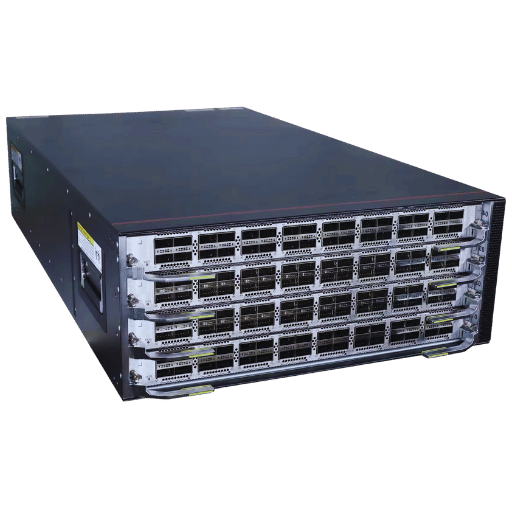
Modules Benefits
- Interoperability: These modules are compatible with the existing network infrastructure, thereby solving compatibility problems.
- Cost-effective: Although they can be expensive at first, these modules offer long-term savings due to their improved performance and scalability.
- Thermal Regulation: They have efficient heat dissipation systems that help in maintaining the right operating temperatures for them.
- Network Fitment: Designed to work well with the network architecture hence fitting perfectly into planned infrastructures.
- Firmware Trustworthiness: Modules work on regular firmware updates which ensures their reliability in terms of security and performance levels.
- Operational Verification: Testing has been done extensively so that it can perform reliably under many different network conditions.
Compatibility with 10GbE and 25G Networks
QSFP28 modules were made to correspond with both 10GbE and 25G networks, so they are flexible in different types of networking situations. Usually, these modules have modes for backward compatibility and can be connected to the infrastructure of 10GbE through breakout cables or suitable adapters. In the case of a 25G network, what happens here is that the QSFP28 modules use their additional features, which allow them to establish a stable connection that performs better without requiring many adjustments on a preexisting network setup. This means that businesses can upgrade their systems step by step without causing too much disruption while improving performance and capacity as well.
How to install a QSFP28 switch in a ?
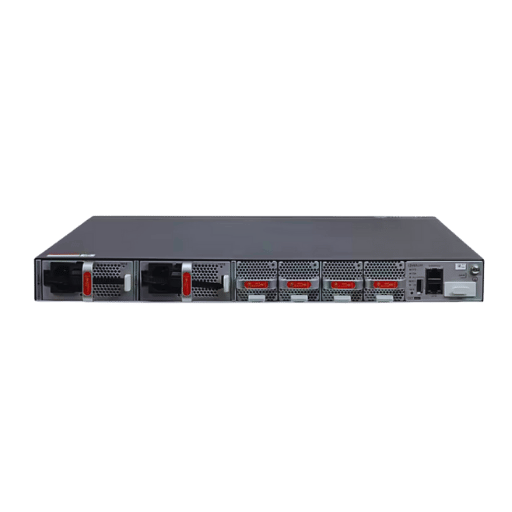
Setting Up Your Environment for QSFP28 Deployment
- Evaluate Network Requirements: Take note of your network’s bandwidth and connectivity requirements.
- Improve Infrastructure: Make sure that the cables, transceivers, and switches are compatible with QSFP28 standards.
- Confirm Compatibility: Ensure that you have hardware that works well with QSFP28 modules.
- Power and Cooling Planning: Have enough power supply units and cooling systems that will be required.
- Configure Network Settings: Update software programs and firmware versions which will facilitate the use of QSFP28s throughout the network.
- Test The Setup: Always perform thorough tests before considering any new installations reliable or functional, especially if two 100G QSFP28 modules are being implemented.
Optimizing the performance of networks through the use of QSFP28s
Several important steps need to be taken in order to optimize network performance via QSFP28 implementation for better efficiency and reliability. First, ensure that cabling is done right by using fiber optic cables that are of high quality and designed specifically for QSFP 28 standards. Secondly, employ advanced tools for managing networks that can effectively monitor data flow using VXLAN technology. These tools will identify bottlenecks and optimize traffic patterns. Another measure would be updating firmware regularly as well as software for all devices within the network so as to take advantage of increased performance levels and new security features. Last but not least; load balancing measures should also be put into place where various paths may carry equal amounts of traffic hence preventing any one path from being overwhelmed with packets thereby causing congestion or failure altogether.By following these rules, organizations will realize a strong and high-performing network infrastructure.
What are the best places to buy QSFP28 switches and accessories?
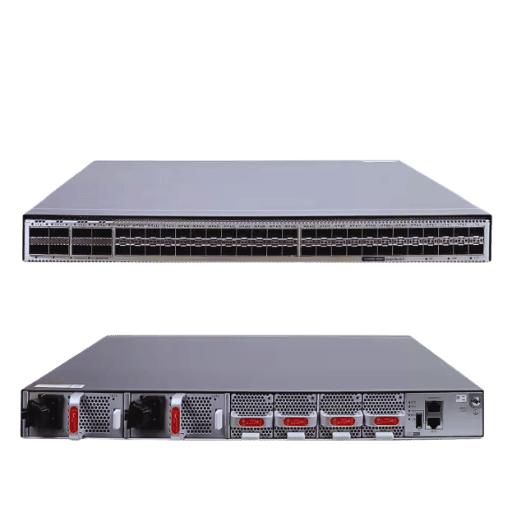
Leading Recommendations for Dependability and Quality
- Cisco: Cisco is widely known for producing strong, reliable network equipment. They offer a wide range of QSFP28 switches and accessories.
- Arista Networks: Arista Networks is an innovative technology company that provides cutting-edge QSFP28 solutions.
- Juniper Networks: Juniper Networks produces some of the most scalable and resilient network products in the industry. They are a trusted source for QSFP28 hardware.
- Mellanox Technologies PoE solutions: Specializing in high-performance interconnects, Mellanox offers reliable QSFP28 modules and switches.
- Ciena: Ciena has a comprehensive portfolio of network solutions that ensure compatibility and performance with their QSFP28 offerings.
Warranty Information and Buying Tips
To purchase the right QSFP28 switches and accessories, opt for suppliers who give detailed product specifications as well as compatibility information. Make sure they have extensive guarantees, which should preferably extend up to five years; also, find out if they offer strong customer support systems that can handle complex technical hitches. Also, check whether firmware updates are available or easy to integrate into existing networks, among other things, such as 48-port Ethernet L3 switches availability, etc.; this will help you know manufacturers who have been successful in their work over time, thus guaranteeing quality products always.
Comparison of Offers: Getting the Best Deal
While comparing different offers, first look at product features against your own requirements, then evaluate warranty durations, ensuring that it is not less than three years. Investigate technical support presence plus vendor reputation by reading through reviews from experts within related industries or even seeking opinions shared by current users; lastly, compare ease of integration vis-à-vis firmware updates so that everything can smoothly run together with what is already present within your infrastructure, particularly when dealing with 48 port Ethernet L3 switch models etcetera.
Reference Sources
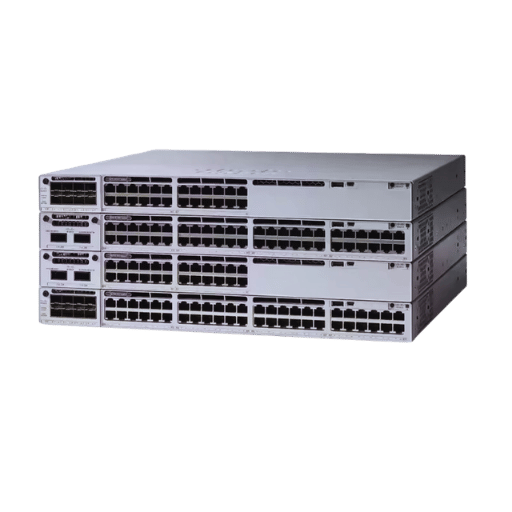
Frequently Asked Questions (FAQs)
Q: What is the switching capacity of a high-performance managed switch?
A: The quantity of data that can be processed by our sophisticated switch designed for management is very great because it can efficiently deal with heavy network traffic ensuring both Layer 2 and Layer 3 performance.
Q: How many QSFP28 ports does this switch have?
A: This managed switch has four QSFP28 ports each operating at 100Gbps which are used as high-speed uplinks in demanding network environments.
Q: Is the switch hot-swappable?
A: Yes, you can replace or upgrade any module without interfering with the network operation since our high-performance managed switches support hot-swap modules.
Q: What makes this switch good for high availability?
A: In addition to redundant power supplies; this device has MLAG capabilities thus allowing two switches to appear as one to other connected devices so as there is no downtime even if one fails but another takes over immediately.
Q: Can I use this for AV over IP applications?
A: Of course! When it comes to AV over IP applications, there’s no better option than our high-performing switches that guarantee lossless transmission of HD audio and video signals required in such scenarios.
Q: Where can I buy this high-performance managed switch?
A: One can purchase our switch from authorized resellers like FS.com or HPE Store US. Always remember the date of purchase for warranty and support services.
Q: Does this switch support Layer 2 and Layer 3 features?
A: Yes, extensive functionalities for Layer 2 and Layer 3 are included in the switch which supports advanced networking protocols thereby enhancing overall network efficiency.
Q: Are there any unique data traffic control characteristics?
A: CoPP (Control Plane Policing) along with list and rate limit features are supported by the Switch for advanced traffic management as well as stronger network security.
Q: How small is the high-performance managed switch?
A: The design of the switch is compact; it’s a 1U unit that fits into standard 19-inch racks easily while still having strong performance and scalability.
Q: Can you stack multiple switches together?
A: Yes, stacking is supported on the Switch, which allows managing several switches as one logical unit to increase scalability and simplify management.
Related Products:
-
 QSFP28-100G-SR4 100G QSFP28 SR4 850nm 100m MTP/MPO MMF DDM Transceiver Module
$40.00
QSFP28-100G-SR4 100G QSFP28 SR4 850nm 100m MTP/MPO MMF DDM Transceiver Module
$40.00
-
 QSFP28-112G-SR4 112G OTU4 QSFP28 SR4 850nm 100m MTP/MPO MMF DDM Transceiver Module
$50.00
QSFP28-112G-SR4 112G OTU4 QSFP28 SR4 850nm 100m MTP/MPO MMF DDM Transceiver Module
$50.00
-
 QSFP28-100G-IR4 100G QSFP28 IR4 1310nm (CWDM4) 2km LC SMF DDM Transceiver Module
$110.00
QSFP28-100G-IR4 100G QSFP28 IR4 1310nm (CWDM4) 2km LC SMF DDM Transceiver Module
$110.00
-
 QSFP28-100G-DR1 100G QSFP28 Single Lambda DR 1310nm 500m LC SMF with FEC DDM Optical Transceiver
$180.00
QSFP28-100G-DR1 100G QSFP28 Single Lambda DR 1310nm 500m LC SMF with FEC DDM Optical Transceiver
$180.00
-
 QSFP28-100G-PSM4 100G QSFP28 PSM4 1310nm 500m MTP/MPO SMF DDM Transceiver Module
$180.00
QSFP28-100G-PSM4 100G QSFP28 PSM4 1310nm 500m MTP/MPO SMF DDM Transceiver Module
$180.00
-
 QSFP28-100G-FR1 100G QSFP28 Single Lambda FR 1310nm 2km LC SMF with FEC DDM Optical Transceiver
$215.00
QSFP28-100G-FR1 100G QSFP28 Single Lambda FR 1310nm 2km LC SMF with FEC DDM Optical Transceiver
$215.00
-
 QSFP28-100G-LR1 100G QSFP28 Single Lambda LR 1310nm 10km LC SMF with FEC DDM Optical Transceiver
$265.00
QSFP28-100G-LR1 100G QSFP28 Single Lambda LR 1310nm 10km LC SMF with FEC DDM Optical Transceiver
$265.00
-
 QSFP28-100G-LR4 100G QSFP28 LR4 1310nm (LAN WDM) 10km LC SMF DDM Transceiver Module
$285.00
QSFP28-100G-LR4 100G QSFP28 LR4 1310nm (LAN WDM) 10km LC SMF DDM Transceiver Module
$285.00
-
 Q28-100G32-BX10 100G QSFP28 BIDI TX1331nm/RX1271nm PAM4 Single Lambda LC SMF 10km DDM Optical Transceiver Module
$500.00
Q28-100G32-BX10 100G QSFP28 BIDI TX1331nm/RX1271nm PAM4 Single Lambda LC SMF 10km DDM Optical Transceiver Module
$500.00
-
 Q28-100G23-BX10 100G QSFP28 BIDI TX1271nm/RX1331nm PAM4 Single Lambda LC SMF 10km DDM Optical Transceiver Module
$500.00
Q28-100G23-BX10 100G QSFP28 BIDI TX1271nm/RX1331nm PAM4 Single Lambda LC SMF 10km DDM Optical Transceiver Module
$500.00
-
 QSFP28-100G-ER4L 100G QSFP28 ER4 Lite 1310nm (LAN WDM) 40km with FEC,30km without FEC LC SMF DDM Transceiver Module
$800.00
QSFP28-100G-ER4L 100G QSFP28 ER4 Lite 1310nm (LAN WDM) 40km with FEC,30km without FEC LC SMF DDM Transceiver Module
$800.00
-
 QSFP28-100G-LR1-C27 100G CWDM QSFP28 Single Lambda LR 1271nm 10km LC SMF with FEC DDM Optical Transceiver
$600.00
QSFP28-100G-LR1-C27 100G CWDM QSFP28 Single Lambda LR 1271nm 10km LC SMF with FEC DDM Optical Transceiver
$600.00

